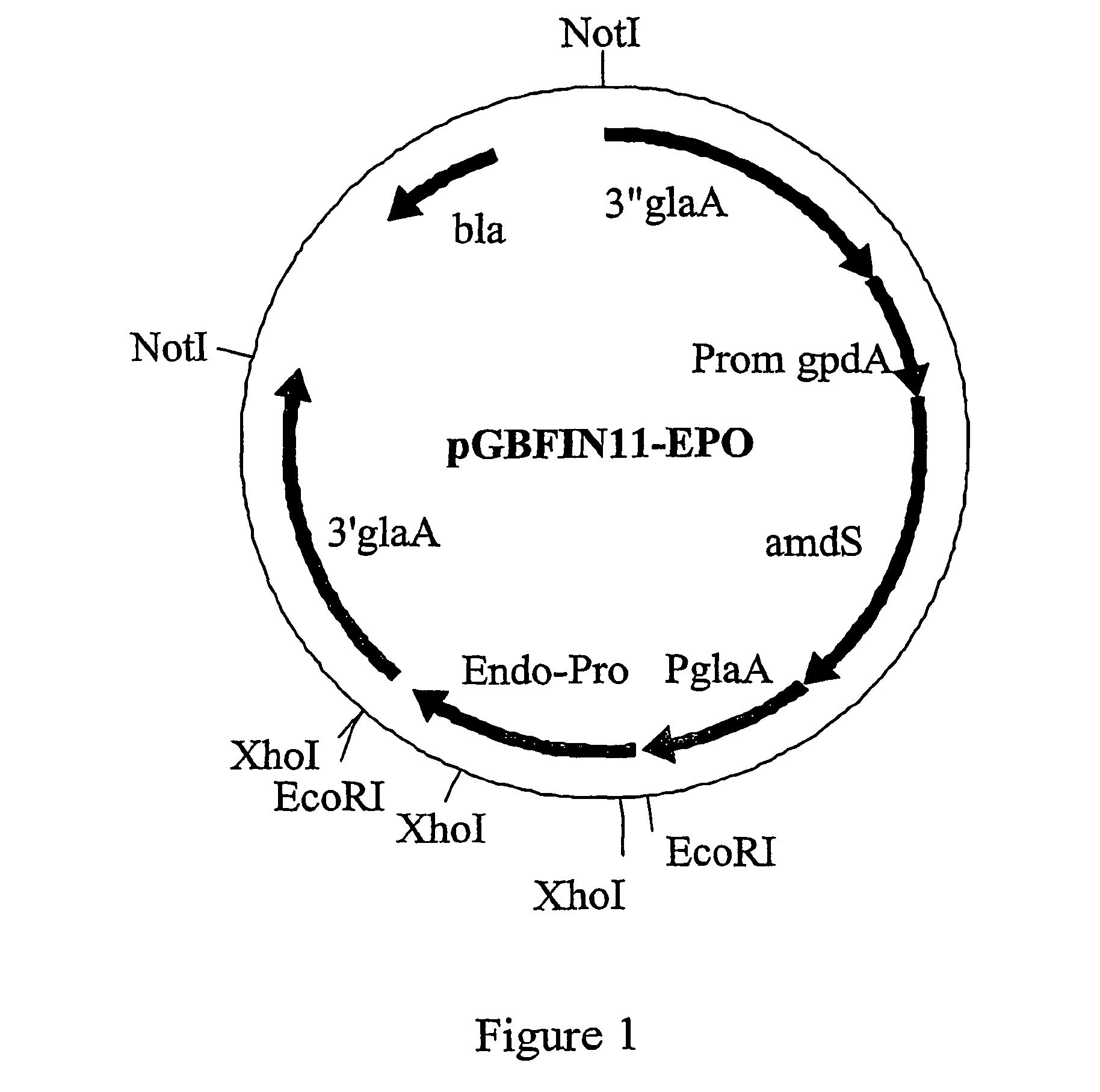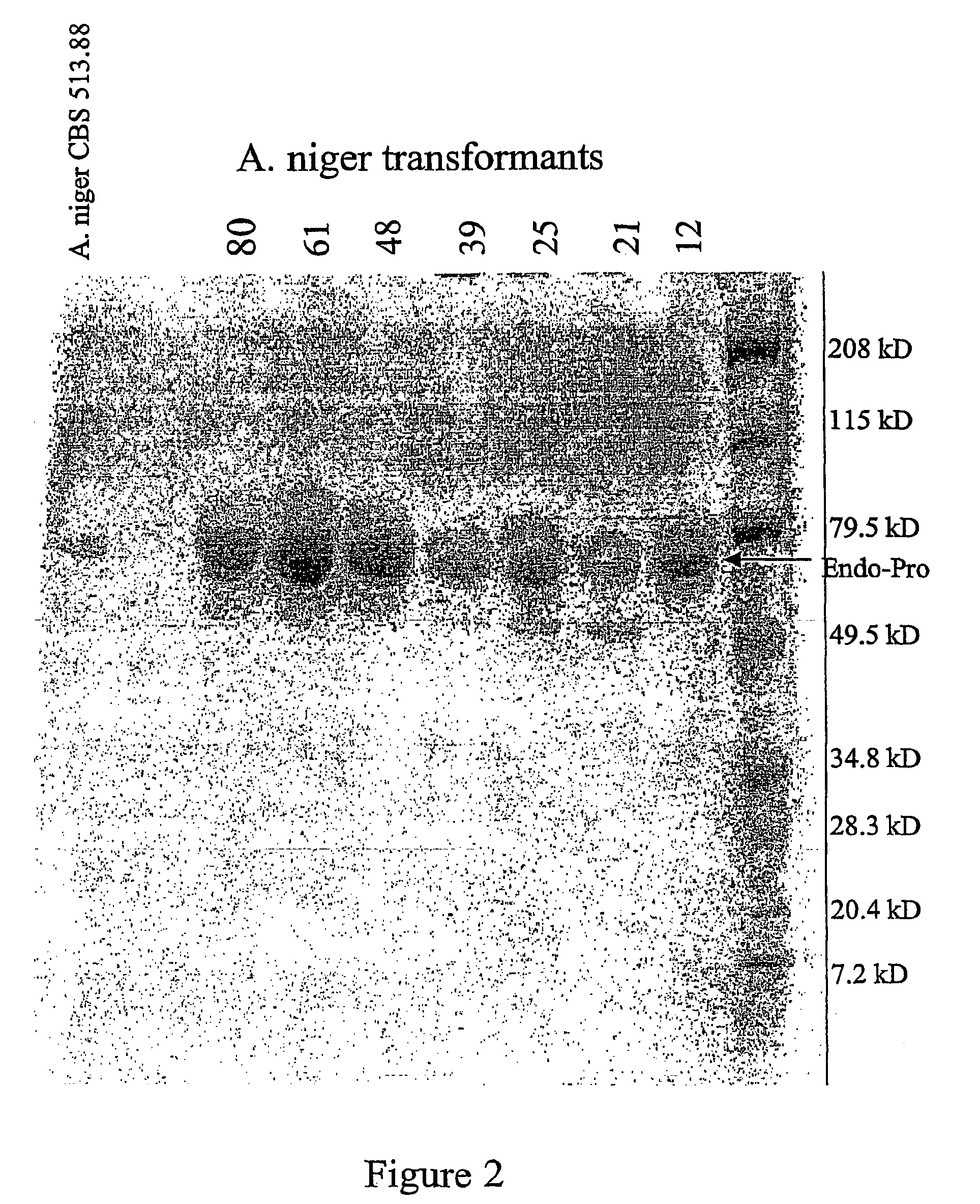Protein hydrolysates enriched in peptides having a carboxy terminal proline residue
a technology of proline residues and carboxy terminals, which is applied in the field of protein hydrolysates, can solve the problems of reducing the yield of the final product, increasing bitter taste, and limited application of the enzyme hydrolysates of cow's milk or cow's milk fractions in the food industry
- Summary
- Abstract
- Description
- Claims
- Application Information
AI Technical Summary
Benefits of technology
Problems solved by technology
Method used
Image
Examples
example 1
Hydrolysis of Beta-Casein Using Subtilisin in Combination with a Proline Specific Endoprotease from F. meningosepticum.
[0207]Beta-casein represents one of the major casein fractions of bovine milk. The protein has been well characterised in terms of its amino acid sequence and is commercially available in an almost pure form. As such, beta-casein offers an excellent test substrate for studying the relationship between enzyme cleavage sites and the length of various peptides formed during enzyme hydrolysis.
[0208]This Example demonstrates that despite the broad spectrum character of subtilisin, the addition of a very specific enzyme like a proline-specific endoprotease can have a major impact on the size of the beta-casein fragments formed. Improved yields for casein fractions upon incubation with subtilisin in combination with a proline-specific endoprotease can therefore be obtained. Beta-casein is relatively rich in proline as acid hydrolysis followed by amino acid analysis carrie...
example 2
Beta-casein hydrolysates and bitterness.
[0212]Although Example 1 Illustrates the effect of a proline-specific endoprotease on peptide size and the proportion of peptides with proline as the carboxy-terminal amino acid residue, the effect of this enzyme on bitterness was not measured in Example 1. Casein hydrolysates are notoriously bitter and this property has been linked to their relatively high content of hydrophobic amino acid residues.
[0213]To test the effect of a proline specific endoprotease on the taste of beta-casein hydrolyzed by a subtillsin, enzyme Incubations using DELVOLASE™ and the DELVOLASE™ with proline-specific endoprotease were performed as described in Example 1. Following heat inactivation of both subtilisin and proline-specific endoprotease, samples were cooled to room temperature and distilled water was added to give final casein concentrations of 4% (w / w). The taste of the latter solutions were then evaluated by a panel of experienced tasters. The tasters were...
example 3
Isolation of a Proline-Specific Endoprotease from Aspergillus niger.
[0215]A large collection of moulds capable of forming black spores were allowed to grow in a pH 6.5 medium containing 1.0 gram of K2HPO4, 0.5 gram of KH2PO4, 0.5 gram of KCl, 0.5 gram of MgSO4. 7H2O, 0.01 gram of FeSO4, 7H2O, 5 grams of glucose, 15 grams of collagen (Sigma) and distilled water added to obtain a volume of 1 litre. The inoculum for each experiment was prepared by a method in which the spores of fungi growing on an agar slant (5 days old) were taken up in 5 milliliters of sterile water. Of the later suspension, 2%(v / v) was used for inoculation of the pH 6.5 medium. Growth was allowed for 100 hours at 28 degrees C. with shaking after which the culture was filtrated and samples of the clear filtrate were incubated with the synthetic peptide Z-Ala-Pro-pNA (Bachem; Bubendorf, Switzerland) at pH 5.0, 50 degrees C. Samples capable of releasing pNA were identified by measuring the increase in absorbance at 4...
PUM
| Property | Measurement | Unit |
|---|---|---|
| molecular weights | aaaaa | aaaaa |
| pH | aaaaa | aaaaa |
| pH | aaaaa | aaaaa |
Abstract
Description
Claims
Application Information
 Login to View More
Login to View More - R&D
- Intellectual Property
- Life Sciences
- Materials
- Tech Scout
- Unparalleled Data Quality
- Higher Quality Content
- 60% Fewer Hallucinations
Browse by: Latest US Patents, China's latest patents, Technical Efficacy Thesaurus, Application Domain, Technology Topic, Popular Technical Reports.
© 2025 PatSnap. All rights reserved.Legal|Privacy policy|Modern Slavery Act Transparency Statement|Sitemap|About US| Contact US: help@patsnap.com


